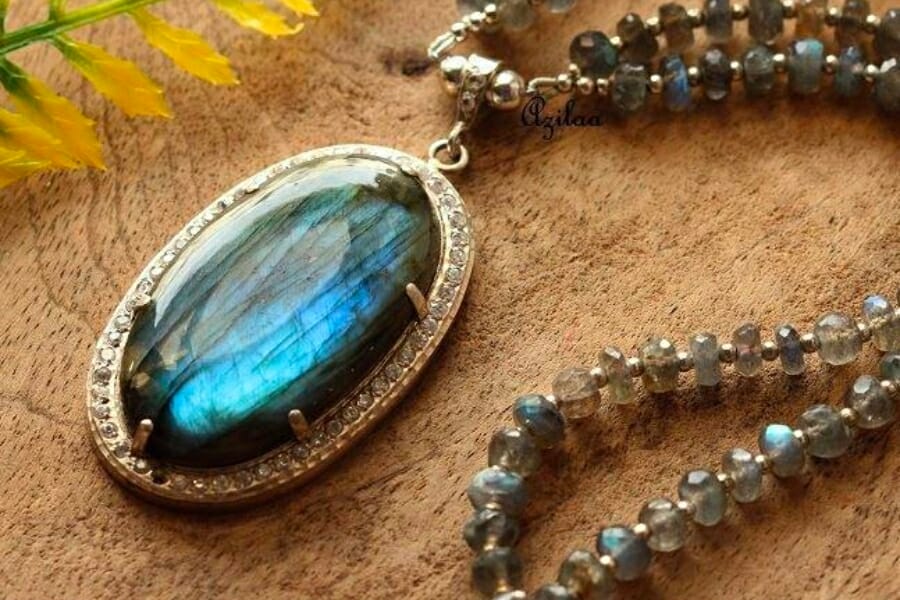Labradorite has gained popularity in recent years due to its stunning iridescence and unique properties. Because of its breathtaking beauty, it’s highly valued in the world of jewelry, being one of the most sought-after gems by designers and collectors.
Apart from it, Labradorite is also believed to have some spiritual and healing properties that make it a popular choice for those seeking alternative forms of therapy. In fact, many people use it during meditation or as a tool for divination.
If you’re curious to learn more about this captivating gemstone, read on as we explore its fascinating types, properties, and uses. From its geological origins to its current value in the market, we’ll dive deep into the world of Labradorite and discover what makes it truly worth owning.
What Labradorite Is
Labradorite is a type of feldspar mineral that’s known for its unique and striking iridescence, also called “labradorescence”. It’s found in various parts of the world, but was first discovered in the Canadian province of Labrador, which is where it gets its name. It typically has a dark gray or black base color with patches or veins of iridescent colors that can range from blue and green to yellow and orange.
Labradorite is formed from magma that cools slowly within the Earth’s crust, allowing the minerals within it to form in distinct layers. This layered structure is what gives this gemstone its characteristic iridescence, as light reflects off the different layers and creates the illusion of movement and color.
This natural wonder comes in different types, each with different characteristics and price tags, too.
Rainbow Moonstone (White Labradorite)
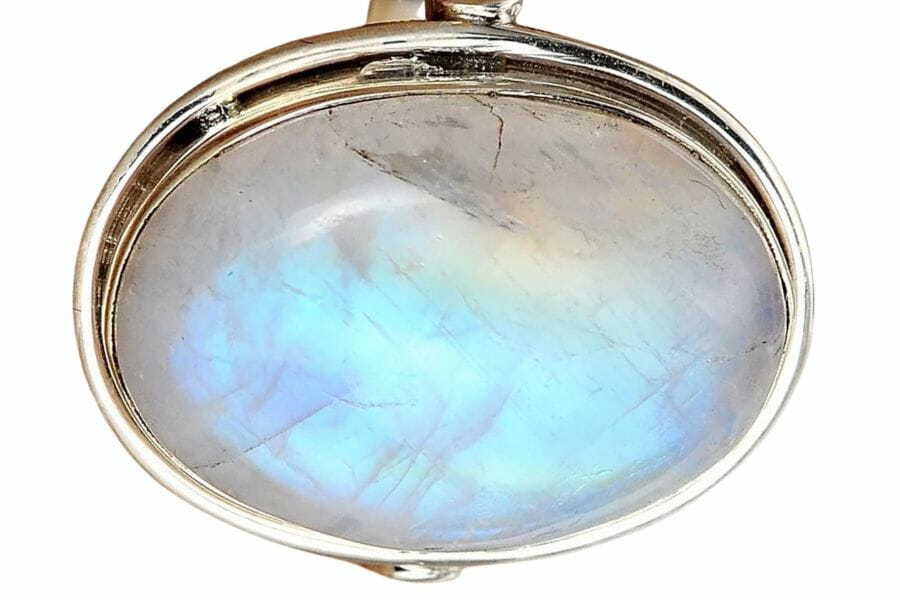
Photo provided by BohoMagicSilver on Etsy
Rainbow Moonstone, also known as White Labradorite, displays a dazzling and colorful iridescence. While regular Labradorite typically displays iridescent hues of blue, green, yellow, and orange, Rainbow Moonstone can also display shades of purple, pink, and red, giving it a rainbow-like effect.
This type is believed to have spiritual and healing properties. It’s said to enhance intuition, promote self-discovery, and protect against negative energies. Due to its unique and eye-catching appearance, Rainbow Moonstone is also highly valued in the world of jewelry, and is often used in the creation of statement pieces that are sure to catch the eye.
How much is Rainbow Moonstone worth
Its unique appeal made the Rainbow Moonstone pricey. Currently, it’s sold at the price range of $95 to $480 per carat.
Spectrolite
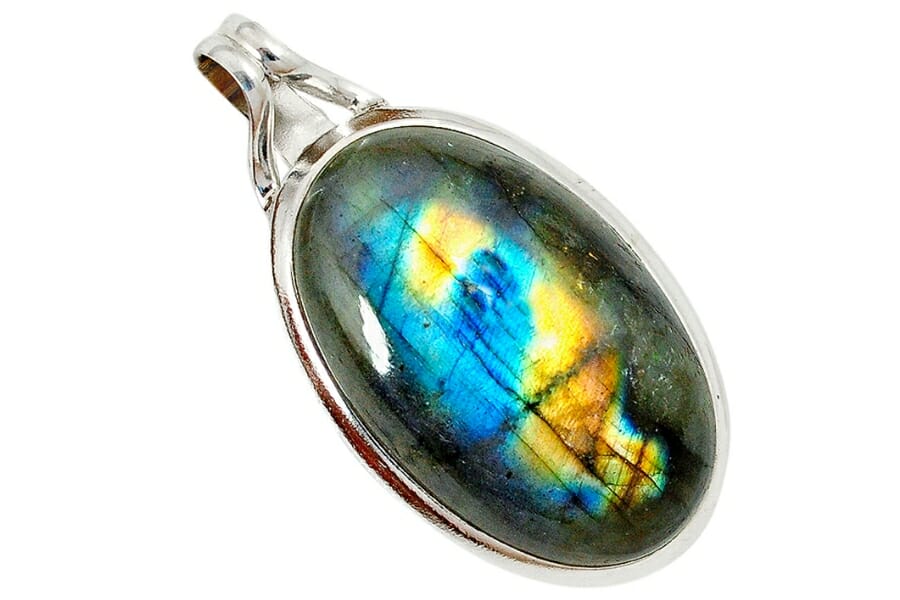
Found primarily in Finland, Spectrolite is known for its stunning and vivid iridescence. What sets it apart from other types of Labradorite is the intensity and range of colors that it displays.
Spectrolite can exhibit a wide range of colors, including blues, greens, yellows, oranges, and reds, as well as more rare and intense colors like purples and pinks. The colors are often arranged in a swirling, almost hypnotic pattern that gives it a unique and mesmerizing quality.
Because of its beauty and rarity, this type is highly valued in the world of gemstones and is often used in high-end jewelry pieces. It’s also said to enhance intuition, promote self-discovery, and protect against negative energies.
How much is Spectrolite worth
Spectrolite is one of the more sought-after types of Labradorite and it typically commands a price of $16 to $540 per carat.
Andesine
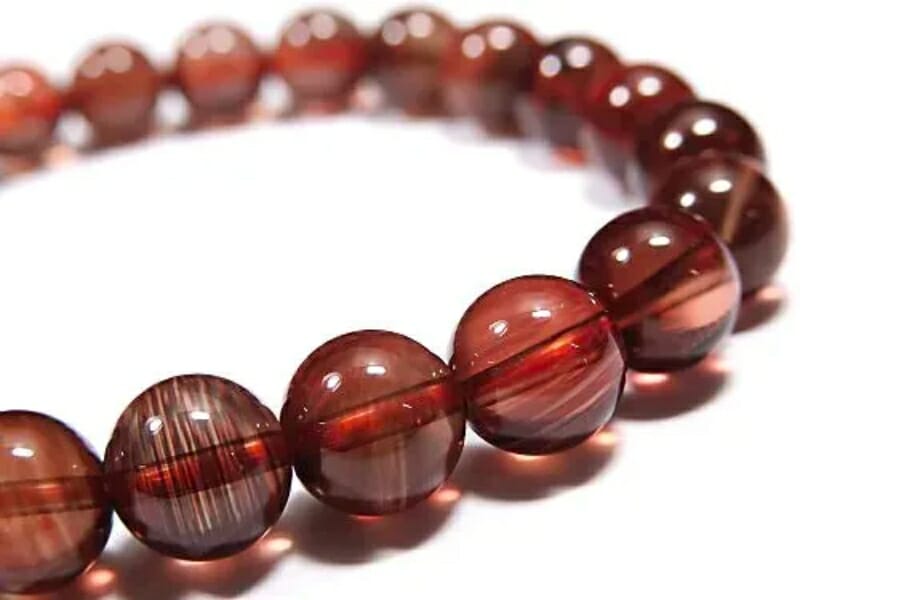
Andesine is known for its yellow, orange, and red hues. It is named after the Andes mountains in South America, where it was first discovered in the early 1800s.
This type of Labradorite can be found in various parts of the world, including the United States, Canada, Russia, and China. It’s often used as a gemstone due to its attractive colors, and can be cut and polished into a variety of shapes and sizes.
There has been some controversy in the past regarding the authenticity of Andesine, as some of its stones have been treated with heat or other methods to enhance their color. However, natural Andesine does exist and is highly valued in the world of gemstones.
How much is Andesine worth
Andesine, so far, is the most affordable type of Labradorite and sells at the price of $16 to $24 per carat.
Why Labradorite Is So Expensive
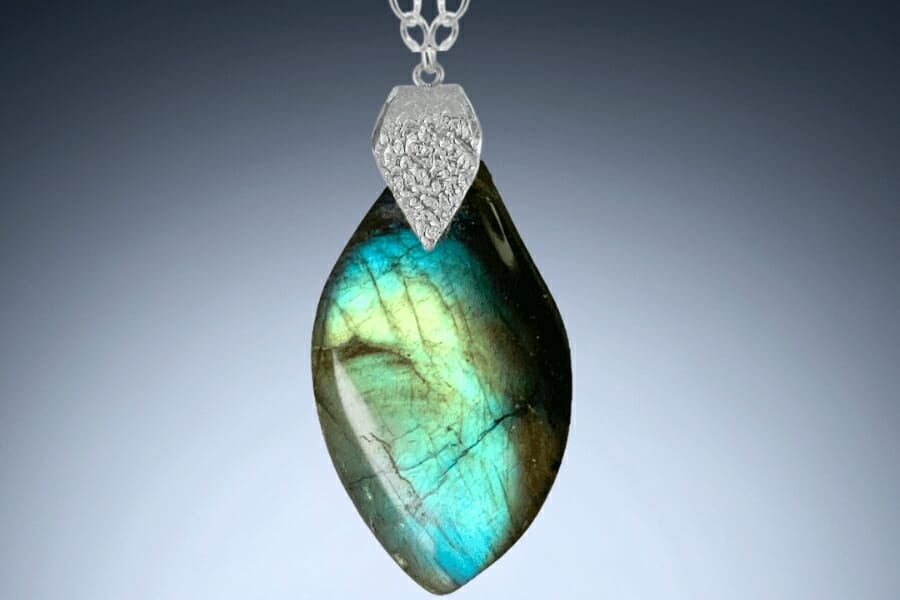
Labradorite is a truly unique and mesmerizing gemstone that has captured the attention and admiration of people around the world. It’s valued for its stunning iridescence called “Labradorescence”, which can display a range of colors from blues and greens to yellows and oranges, and even more rare and intense hues like purples and pinks.
One reason why Labradorite is so valued is because of its rarity. While it can be found in various parts of the world, high-quality specimens are not easy to come by. The best Labradorite is typically sourced from areas like Madagascar, Finland, and Canada, where the conditions for its formation are just right. Additionally, it can be difficult to mine and cut due to its unique structure, which requires skill and expertise to bring out its full beauty.
Another reason why this gemstone is so valued is because of its spiritual and metaphysical properties. It’s said to enhance intuition, promote self-discovery, and protect against negative energies. Many people believe that Labradorite has healing properties as well, and use it in meditation and energy work. This combination of beauty and metaphysical properties makes it a popular choice for those seeking a gemstone that is both visually stunning and spiritually meaningful.
How To Determine The Value Of Labradorite
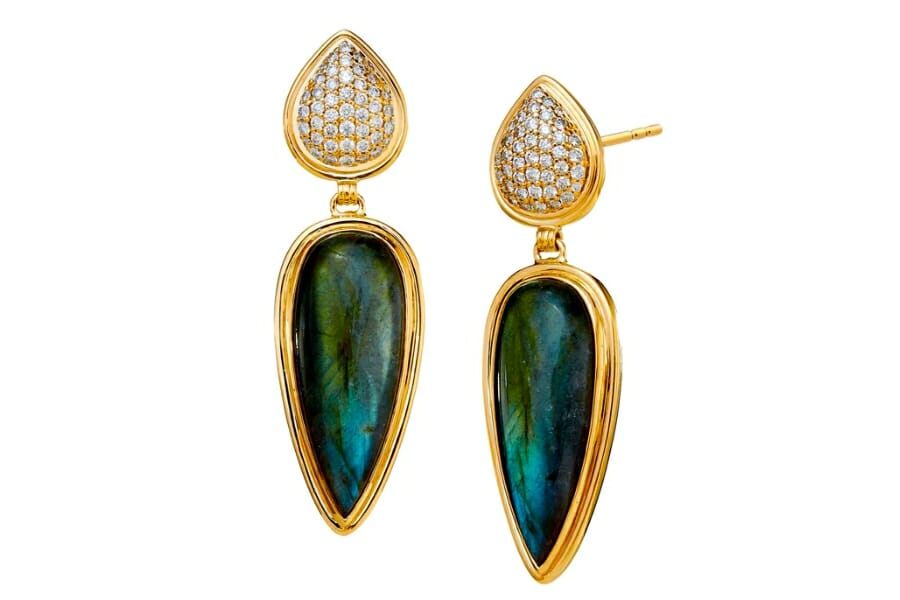
To determine Labradorite’s price and value, there are a handful of factors that come into play, such as the following:
Labradorescence
Labradorescence is the unique optical phenomenon that causes the stunning iridescence seen in Labradorite, and it’s one of the most important factors that affect its price.
Labradorites with bright, intense colors that shift and play across the surface of the stone are the most highly valued, as they are the most visually striking and unique. These stones can command a higher price than stones with weaker or less defined labradorescence.
The placement of the labradorescence within the stone also matters. Stones with labradorescence that covers a large area of the surface are more valuable than those with only a small area of iridescence. In some cases, stones with a unique pattern or distribution of labradorescence can also command a higher price.
Pleochroism
Pleochroism is a property that Labradorite exhibits in which it displays different colors when viewed from different angles. The effect of pleochroism on Labradorite’s value depends on the color and strength of the different colors displayed. If the stone displays two or three distinct colors with strong contrast between them, it can be more valuable than a stone with only one or two weak colors.
However, if the different colors displayed by the pleochroism are similar or not particularly strong, it may not add much value to the stone. In some cases, pleochroism may even be considered a negative trait, especially if it detracts from the strength and beauty of the labradorescence.
Color
The most highly-valued Labradorite specimens display a range of iridescent colors, including blue, green, yellow, orange, and even purple or pink. The intensity and brightness of the colors also affect the value of the stone, with more vivid and saturated colors commanding higher prices.
Clarity
Labradorites that are free from visible inclusions or cracks are generally highly valued than those with visible imperfections. However, some inclusions or fractures can create interesting patterns or effects within the stone, which can actually increase its value. We’ll discuss on the next item how certain inclusions affect Labradorite’s price for the better.
Inclusions
Some inclusions add character and uniqueness to Labradorite, making it more interesting and valuable to collectors. In some cases, inclusions can even create interesting patterns or formations within the stone, adding to its beauty and value.
Cut
A well-cut Labradorite will display its colors and iridescence to their fullest potential, while a poorly cut one may not show its best qualities. A skilled lapidary who can bring out the full beauty of the stone can add significantly to a Labradorite’s value.
Carat and Size
Larger specimens of Labradorite are generally rarer and, therefore, more valuable than smaller ones. However, the quality of the stone still plays a major role in its value, so a smaller but higher quality specimen can still command a high price.
Carving and Craftsmanship
The beauty and rarity of Labradorite can be enhanced or diminished by the skill of the artist who has crafted it. A well-crafted carving can bring out the natural beauty of the stone and highlight its unique colors and patterns. The skillful use of light and shadow can create stunning effects that can dramatically increase the value of the piece.
It’s also important to consider the rarity and demand for certain types of carvings. For example, intricately carved and polished Labradorite spheres or figurines may be more valuable due to the time and skill required to create them.
Origin
Some locations are known for producing higher quality Labradorite stones than others, and as a result, these stones may command a higher price. For example, Labradorite that comes from the original discovery site in Labrador, Canada, is considered to be of high quality and is highly sought after by collectors. Stones from Madagascar, which have become more common in recent years, are also highly prized for their unique colors and patterns.
In addition to the location, the specific mine or quarry where the stone was found can also affect its value. Some mines produce stones with unique colors or patterns that are highly prized by collectors.
Labradorite Price By Type
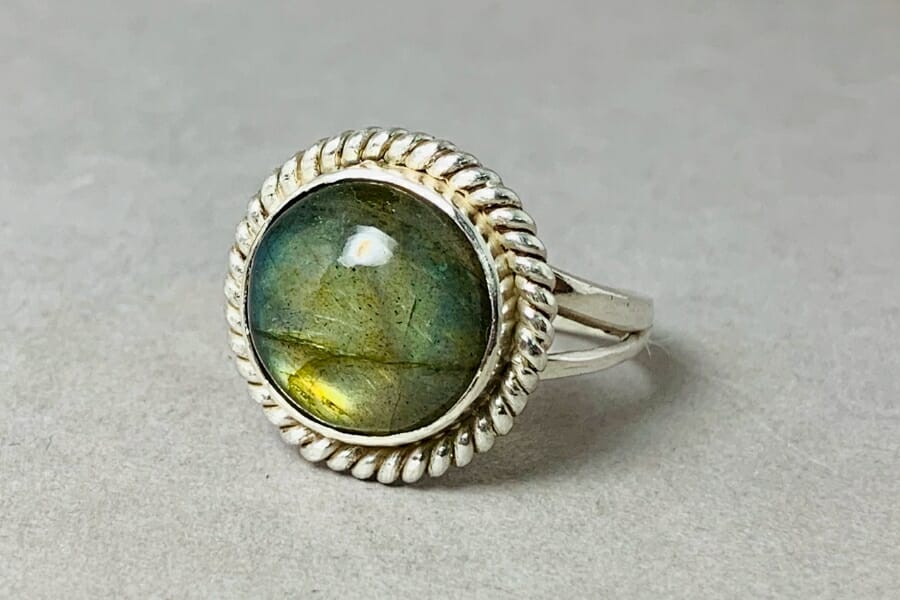
The price and value of Labradorite is often based on its type and below, we have listed the current market prices of this gemstone depending on it:
Labradorite values by type
| Type | Price (Per Carat) |
| Andesine | $16 – $24 |
| Rainbow Moonstone | $95 – $480 |
| Spectrolite | $16 – $540 |
It’s hard to ignore just how much Labradorite’s value changes depending on type. To add a little more fun to our computations, let’s see how much this gemstone costs depending on different units of measurement.
Labradorite pricing by unit of measurement
| Measurement | Price |
| A carat of Labradorite | $16 – $540 |
| A gram of Labradorite | $80 – $2,700 |
| An ounce of Labradorite | $2,268 – $76,544 |
| A kilogram of Labradorite | $80,000 – $2,700,000 |
| A pound of Labradorite | $36,287 – $1,224,698 |
| A ton of Labradorite | $72,574,800 – $2,449,399,500 |
The Most Expensive Labradorite
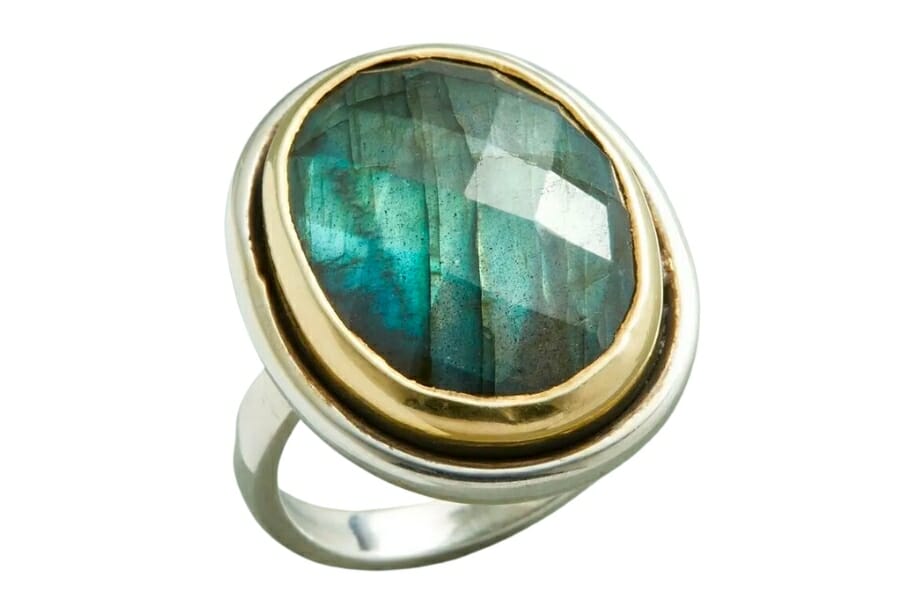
There isn’t any public record or official source that confirms the sale of a single Labradorite gemstone that broke records as the most expensive sale of the gem. However, there have been some notable pieces that have been sold for a high price.
One example is a 1400-pound Labradorite boulder found in Madagascar, which sold for over $600,000 in 2014. The boulder featured vibrant hues of blue, green, and gold and was described as a “once in a lifetime” find by the seller. The buyer of the stone was not disclosed.
Another example is a carved Labradorite sculpture called “The Wave” by sculptor Peter Muller, which sold for $187,200 in 2019. The sculpture featured a stunning Labradorite wave with hues of blue and green, and it measured over six feet tall.
How To Get An Appraisal On Your Labradorite
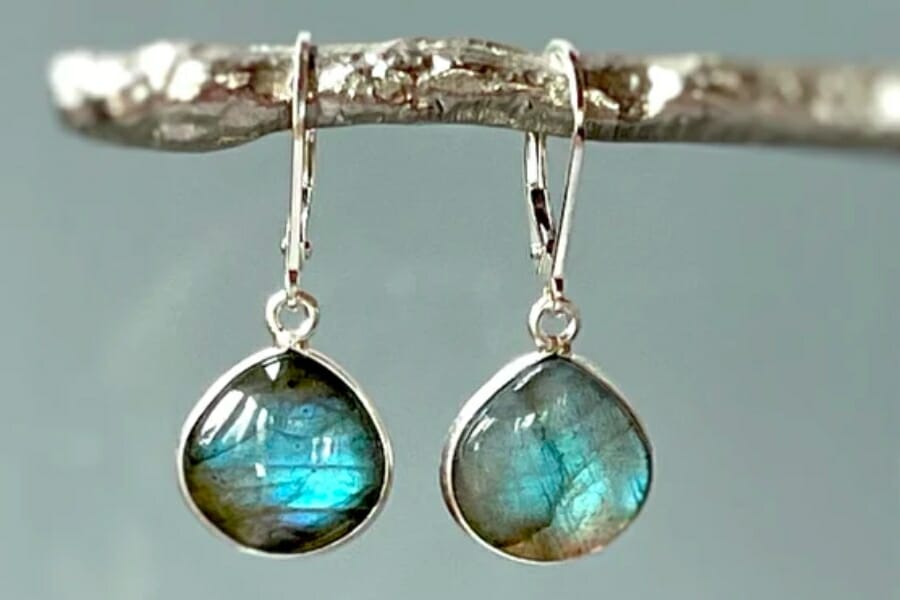
There are several ways to get an appraisal on a piece of Labradorite. One way is to go to a jewelry store or gemstone dealer that offers appraisal services. These establishments may have an on-site appraiser or work with an independent appraiser who can evaluate the Labradorite for you. This option is convenient and may be a good choice if you’re looking for a quick and easy appraisal.
Another way is to attend a gem and mineral show or auction. These events often have expert appraisers on-site who can evaluate your stone for a fee. This can be a good option if you want to get an appraisal from a highly knowledgeable and experienced appraiser.
You can also find appraisers online who specialize in gemstones like Labradorite. These appraisers may offer virtual appraisal services, where you can send photos and descriptions of the stone to be evaluated. This can be a convenient option if you don’t have access to an appraiser in your area.
Lastly, you can contact a certified gemologist or an accredited appraiser who specializes in colored gemstones. These professionals can provide an accurate and comprehensive appraisal of your Labradorite, including its origin, quality, and estimated value. They may also be able to provide documentation that can be used for insurance or resale purposes.
Overall, be sure to do your research and choose an appraiser who is reputable and experienced in evaluating colored gemstones. It would be better to find someone who is accredited by reputable organizations, such as the Gemological Institute of America.

